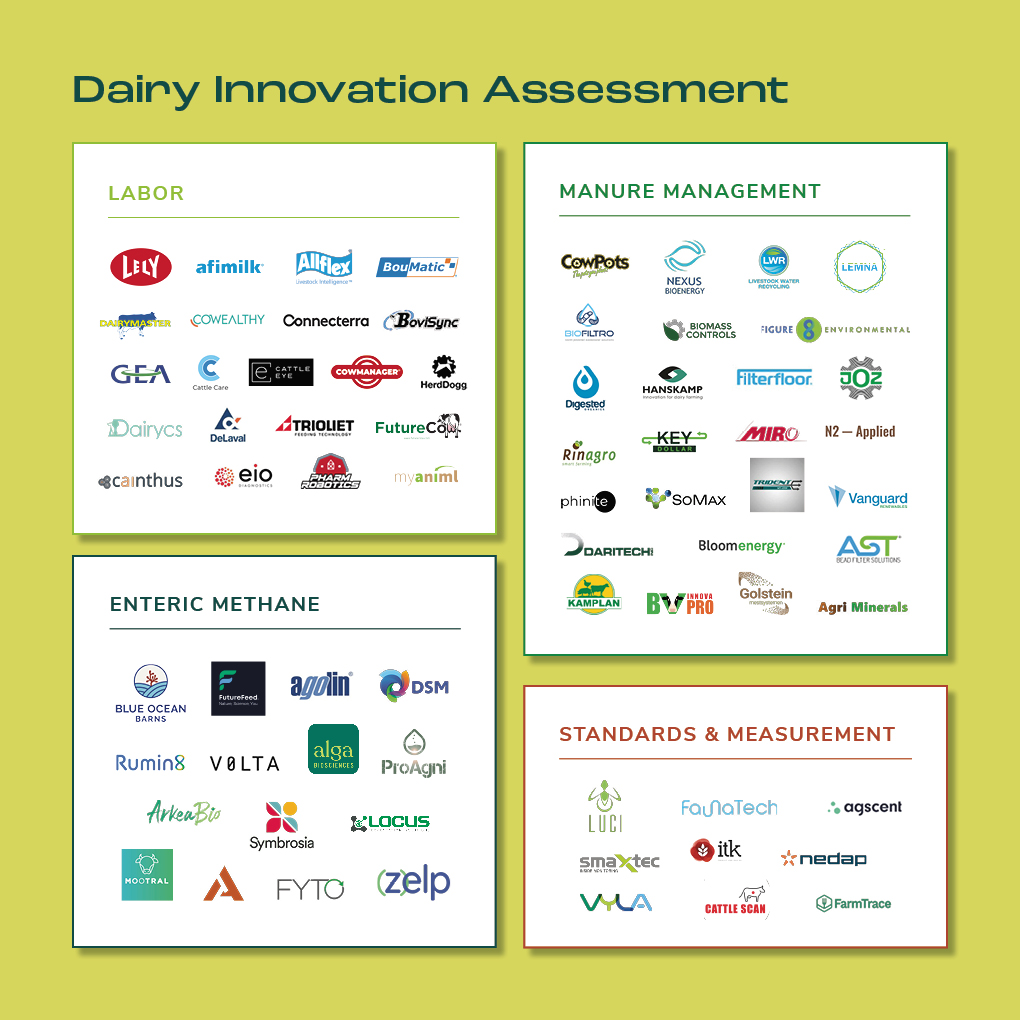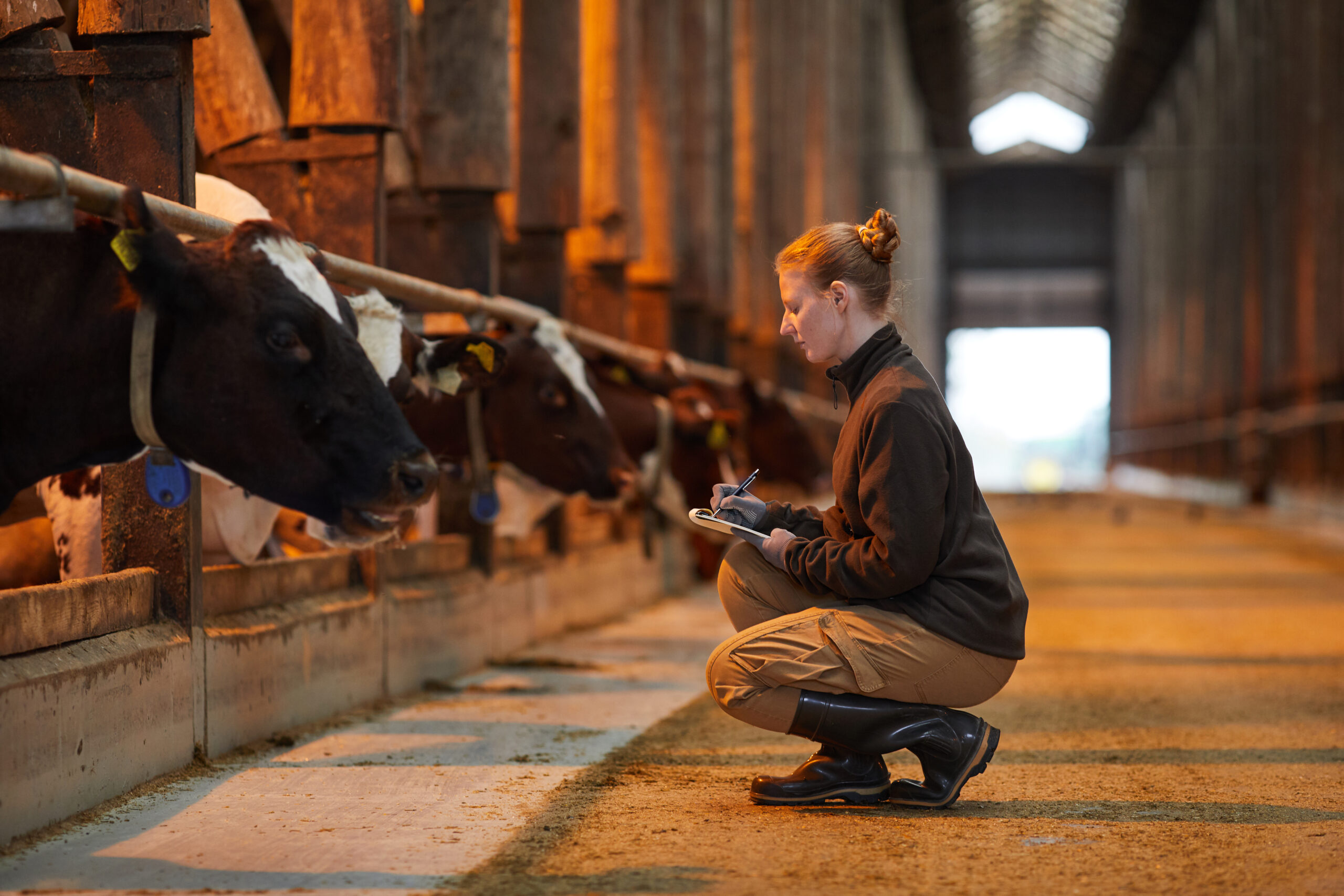Introduction
Globally some 6 billion people consume dairy annually and 1 billion people rely on the dairy industry for their livelihood [1]. Reducing the environmental footprint of the dairy industry has massive benefits globally. While dairy provides critical nutrition and a sustainable income for a large proportion of the world, these benefits are often overshadowed by the industry’s environmental footprint. Greenhouse gases from dairy cows account for around 4% of the world’s total emissions (2010 number) [2]. Reducing the environmental impacts of dairy will reduce climate change and improve water quality.
A Partnership for Climate-Smart Agriculture
The Governments of California and The Netherlands have agreed to work in partnership together to drive climate smart agriculture for the future. As world leaders in the production of food, both regions face many of the same challenges, ranging from climate change, through changing consumer trends. This Global Dairy Innovation Assessment Tool is the first step in our dairy collaborative that identifies the solutions already in market, and those coming to market. From there, we will identify the gaps and work together to support the introduction of new technology and facilitate the commercialization of technology to address the needs of the industry. This assessment tool is the work of a team from University of California, Agriculture and Natural Resources (The VINE) and Wageningen Livestock Research – Dairy Campus.
Identifying Key Challenges
The key project leaders at the University of California, Agriculture and Natural Resources and Wageningen Livestock Research – Dairy Campus determined a set of challenges common to the Dutch dairy industry and the California dairy industry. The most significant of these challenges are:
- • Manure Management
- • Enteric Methane
- • Labor
- • Sustainability Measurements and Standards
It should be noted that other common challenges do exist, such as salt management and water management. These challenges have been excluded from this assessment because their root causes are not the same in California and the Netherlands, and therefore the approach to solving them is not the same.
The four challenges listed above were presented to the dairy community by webinar in July 2022, and attendees were invited to fill in a survey to provide their perspective on the issues and how important they were in their own part of the dairy ecosystem. Over 30 industry players, including farmers, industry service providers and academics, attended the webinar and participated in the survey, which validated our focus areas and provided input for the next stage of our process, a global innovation scan.
Global Innovation Scan and Assessment

The project team conducted a global innovation scan for technology solutions addressing the four common challenges that had been previously identified: manure management, enteric methane, labor, and sustainability measurements and standards. Click here to view the assessment tool.
A few notes on how we determined what should be included in the final list:
- • Only companies developing or having developed technology or products were included. Research projects from universities were not included.
- • The focus was on technology or products, not operational practices
- • The technology needed to be targeting one of our challenges – e.g. most of the dairy feed companies were excluded because they do not have products that directly target enteric methane.
- • The technology needed to be innovative and have a degree of uniqueness relative to other technology in the market
A simple assessment was applied to each company in the scan: how do they affect each of the four focus areas. For each focus criterion, we assessed the impact of that technology on an individual farm level on the scale below:
Very Positive (++) —— Positive (+) —— Neutral (0) —— Negative (-) —— Very Negative (–)
In addition to each of the four challenge criteria, we assessed the impact of each technology on animal welfare because animal welfare needs to be at the core of all dairy industry developments. The same scale was used (++ to – -).
We have also provided broad context for each technology by including information on the size of the company providing the solution, its primary location, and the maturity of the product.
Next Steps
We believe that this catalog of companies with some assessment data will provide significant informational value to the industry. In addition to this, our teams are moving forward with two follow-on projects that will further advance the dairy industry. These are as follows:
- • Building Blocks for Virtual Future Farm: Envisioning a theoretical farm with zero emissions or maximum circularity by leveraging Dutch precision technology and Californian large-scale farming expertise.
- • The VINE VIP (Validation of Innovations Project): Focusing first on value-added products from manure we’re looking for additional technologies that provide value-added products at scale from manure, beyond energy and direct application as fertilizer.
- • A delegation of California-based dairy industry innovators and operators are invited to join an innovation tour of the Dutch dairy industry, starting Nov. 6.
Please contact us if you are interested in learning more or participating in either of these projects.
Omissions or Corrections
While every care has been taken in the preparation of this table, we know that we may have missed some companies and may not have the most up to date information on all companies included.
If you would like to submit a company for inclusion in this Global Dairy Innovation Assessment Tool, or provide an update or correction to information provided here, please fill in this form.
[2] chrome-extension://efaidnbmnnnibpcajpcglclefindmkaj/https://www.fao.org/3/k7930e/k7930e00.pdf

